Oregon Timber Trail
7/10/2021Home of the Modoc, Yahooskin, Klamath, Paiute, Kalapuya, Molalla, Clackamas, Chinuk, Tenino, Wasco, and Wishram peoples.
I found this resolve in so many people at the inaugural start of the Oregon Timber Trail, a 670 mile route with 70k’ of elevation gain from the border of California to its northern terminus by the Columbia River. Weather forecasts placed us solidly in 100ºF+ degree highs and, perhaps as a result, two thirds of registrants decided not to show up on race day. With numerous fires erupting during the course of the race as well as closures from fire damage the previous years, the route was shortened multiple times. The riders at the sharp end of the race would ultimately set the city of Sisters as the unofficial end point at mile 450.
"A new moon for an auspicious start", Everett, one of the racers I met and would later spend most of my time riding with, told me at the pre-race dinner that this is a good sign. The thirty or so of us that showed up that night started off mostly talking nervously about the Bootleg fire that started a few days ago not too far from where we’d soon ride through. The atmosphere easily broke into a convivial nature as we feasted on food the mayor of Lakeview barbequed for us. There’s just something about these multi-day endurance activities that makes it easy to become fast friends. We camped in the community park before getting shuttled to the starting point the following morning.




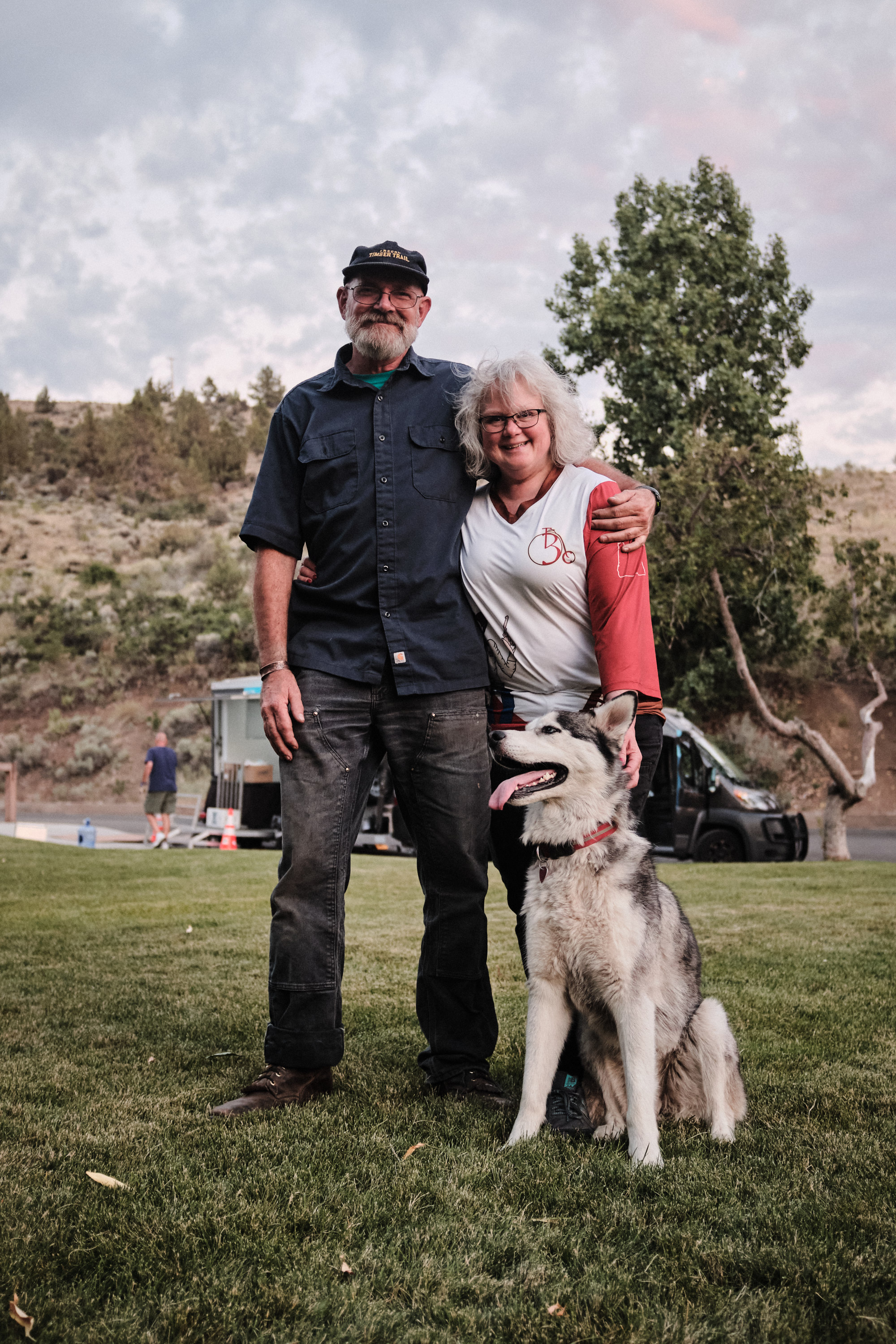


The race began with a few words from Gabe, the organizer of the OTT. He read a section from a book describing trails as the oldest form of communication and as a way for communities to form. The excerpt resonated strongly amongst the racers. Everyone I met again later on the route shared their relationship to tire tracks and footprints, forms of a certain intimacy for those using the trails. For all the visual beauty we were surrounded with, our eyes found comfort in the trails we followed. Along with these signs of life, information and stories piped up and down the route from chance encounters with other racers/riders, the businesses helping support the race, or the dotwatchers cheering us along the way. As remote as we may have been, there were always signs of life.



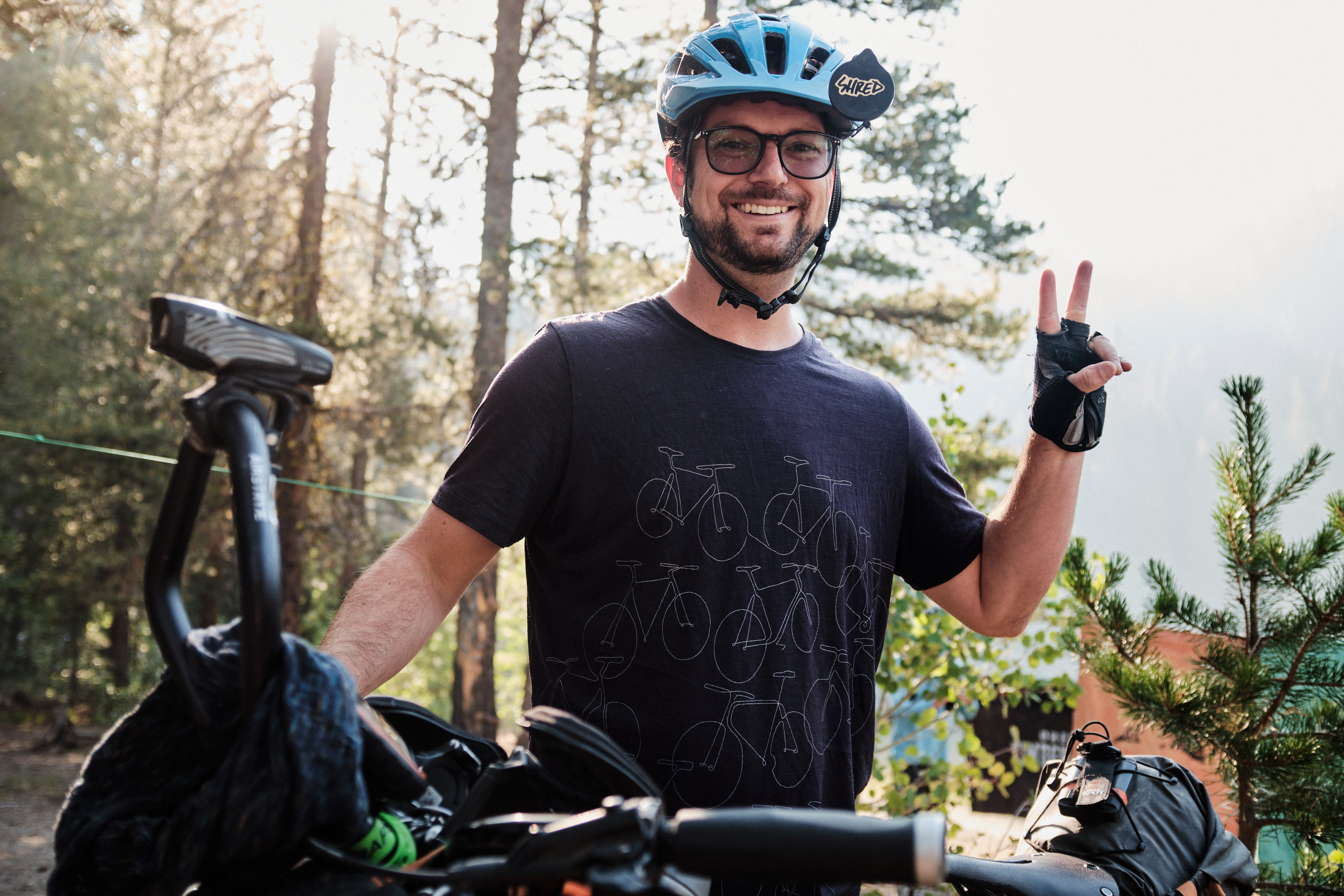
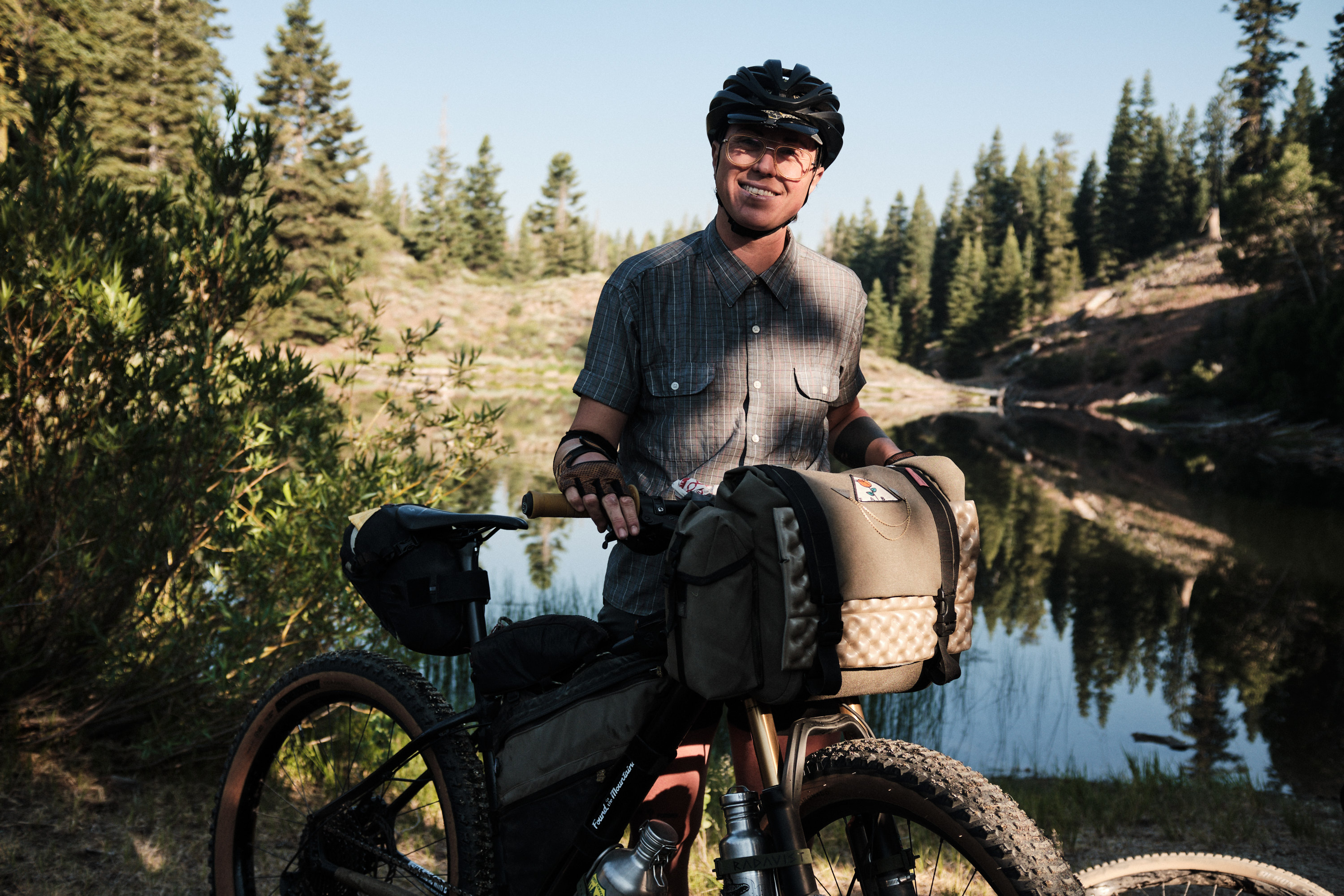



Once we finally got started, I hung back and took my time up the first climb. I had ridden most of the Oregon Outback southbound to warm up for the race and get heat acclimated but the sparse shade and unrelenting sun left me instead with mild heat exhaustion. I ended up misjudging the distance traveled and skipped out on the first and second water resupply. Once the midday heat kicked in, my food slowly melted together. I made a mental note to be more deliberate about selection at the next resupply - not all gummy candy is created equal.
My fatigue eventually dissolved as I slipped into a rhythm, lifting my bike over deadfall, spinning up climbs, and finding my lines through rock gardens. I realized that my tactic to make up ground by riding at night to avoid the heat was flawed - I lost my glasses a few days prior on the Outback and had to ride cautiously, squinting at shadows. I eventually take a nap around 4am, ash falling around me like snow.

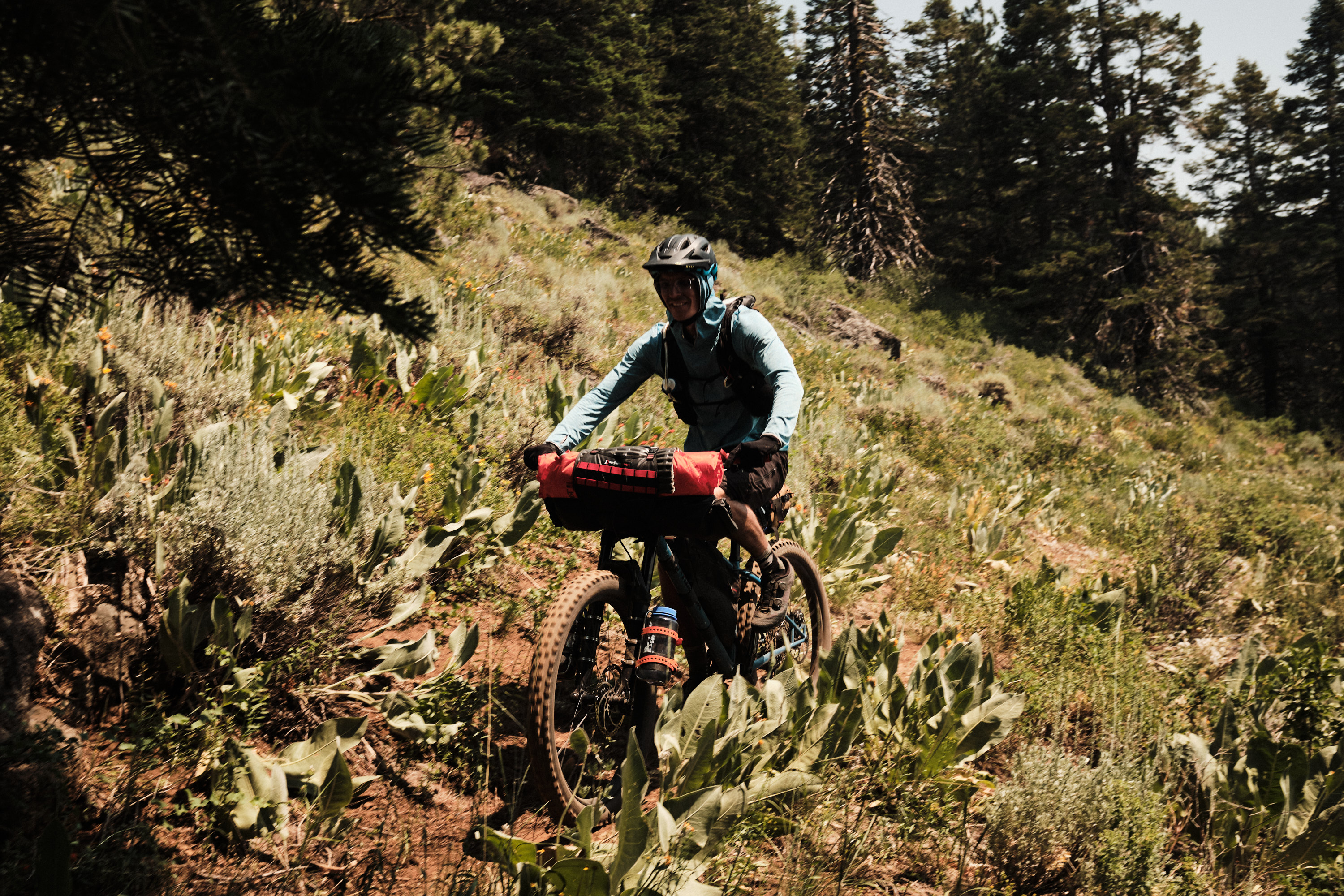






I fared no better the next day and made the same mistakes with water, eventually finding myself on a particularly long, exposed stretch spending six hours without water, barely able to sweat. When I finally saw a strip of fresh grass running down a gulch indicating a spring, I rushed to filter the silty water, drench my clothes, and drink half a gallon. Nasal drip was able to resume and I spent the next ten minutes hacking and shooting snot rockets to clear out all the ash that had built up. My now daily nose faucet gush of blood around 7pm doesn't help keep me stealth from the mosquitoes whose intensity always spikes around sunset.
Sapped, when I reached the Chewaucan River, I saw Rhett and we talked for what ended up being two hours. From information relayed from Karol, Alan had a mild crash early on in the race and bent back his fork severely enough that it was still rideable when reversed. Just last week, a known issue for his frame made itself audibly apparent resulting in him leaving our warmup ride on the Outback in search of a welder. The work thankfully held up for the race. Ben Groenhout arrived at our camp at some point in the night and I managed to bid him good luck when I see him in the morning, a KN95 slung around his neck.
Light and fast is an approach I’ve internalized for most trips but the two days spent being light and slow meant I no longer had sufficient food to tackle Winter Rim. I descended into Paisley, dreaming of a hot meal but found none in the sleepy town. Once I got service again, I saw a group text with worrisome updates on how much the fire had grown. Trackleaders showed almost half the field leaving the route from various places and converging in Paisley. It doesn’t take long for everyone to reunite and share their own trials. Dan, who had a strong start but turned back after climbing Winter Rim, shared eerie photos of the smoke.
We all opted to leapfrog the Fremont section, deciding to scratch. We cleared out the local mercantile’s scant selection of breakfast burritos, switched into touring mode, and managed to sort out shuttles to Chemult via hitchhiking, a fellow scratched racer (thank you, Kevin and Angelica!), and a local outfitter called Paisley Adventures (thank you, Michael!). I wished I had taken a video of Mike, one of the scratched racers, dancing on the side of the road with Rhett’s cardboard hitchhiking sign.







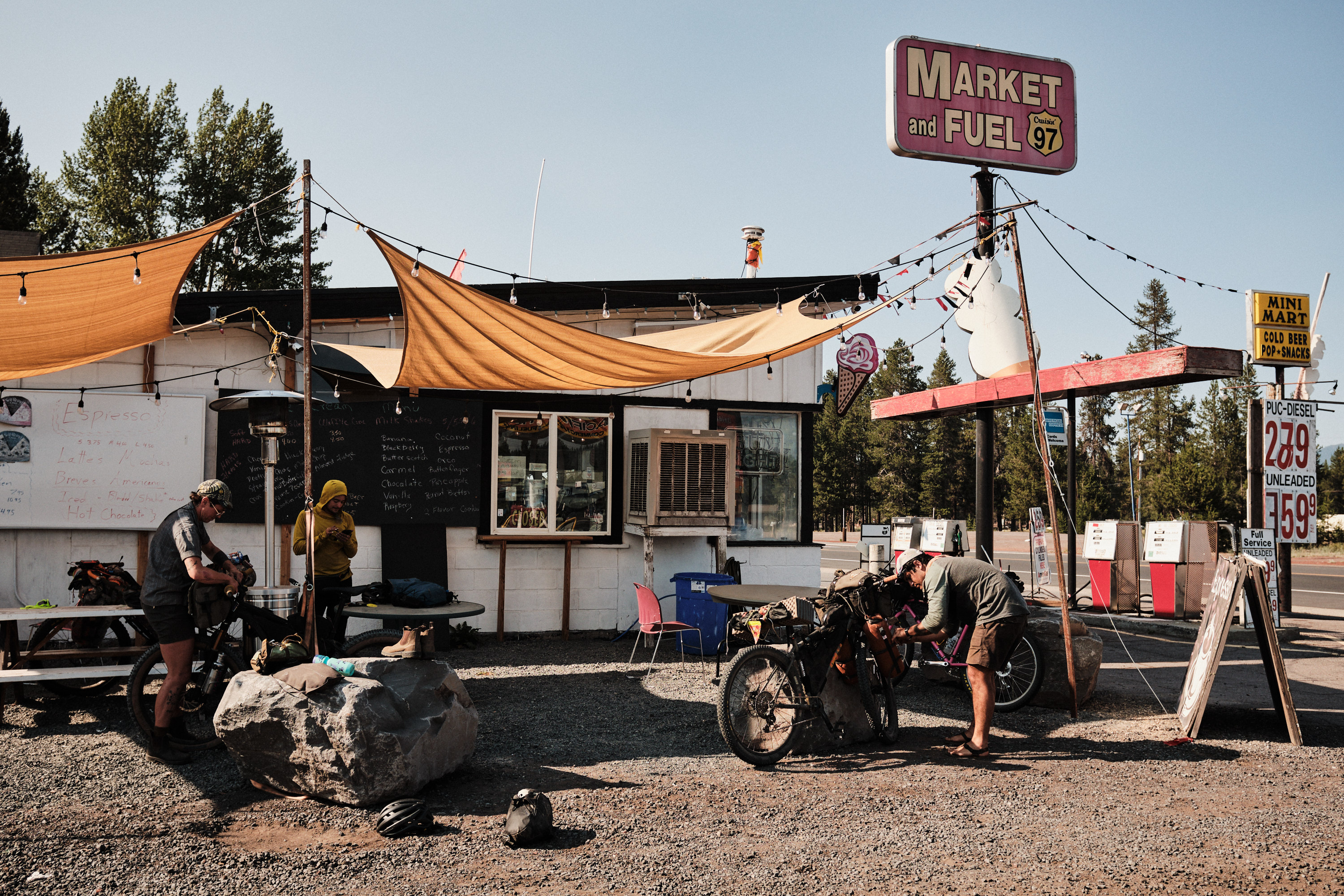

Touring mode engaged, we all joked that a party sub sandwich would be fitting as our first meal at party pace. No one followed through. Max or Geo recalled a comment from Maxwell overheard at the pre-race dinner. "The smoke doesn't worry me. I smoke so much that I'm used to it." We checked Trackleaders and it looked like he was doing right by that comment and pushing on through the densest section of smoke.
I hoped to arrive in Chemult early enough to take photos of Ben Handrich and Nat Henderson-Cox, the two racers at the sharp end of the race but later heard that they breezed through town, Nat only spending 2 minutes scarfing down his lunch before continuing.
After finding Sam, another scratched rider, we all received another group text with more trail updates. The Bootleg fire had grown considerably without containment and an evacuation notice from the forest service was issued for anyone in the Fremont-Winema NF, the first 207 miles of the route. We hoped everyone still in that section would be able to get out soon.

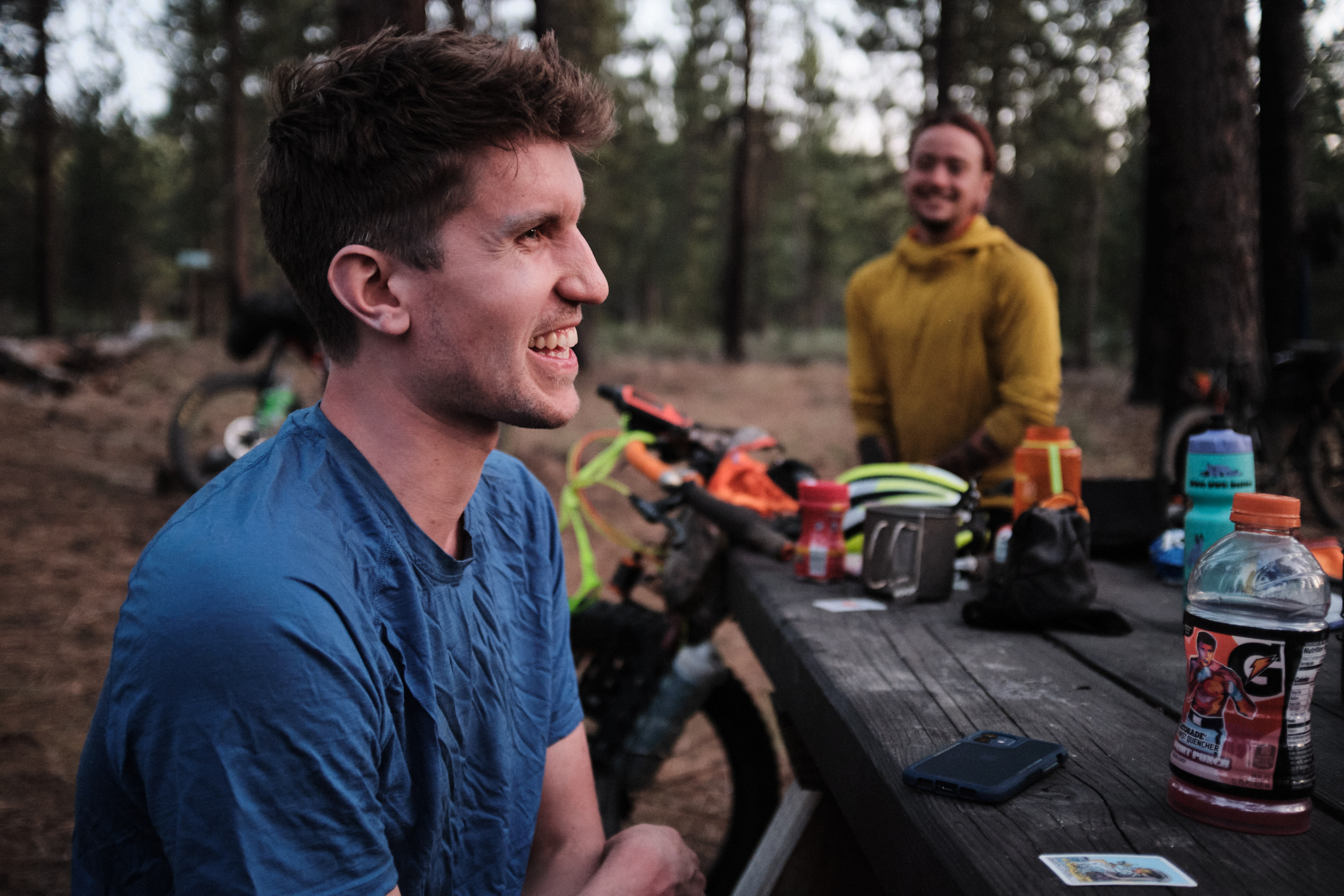





Having dealt with so much dehydration and heat, the Willamette tier was a respite for all of us. We took advantage of every lake to cool off, less concerned about water resupply points now that we were in a more verdant, less arid section of the route. The discomfort from the heat was unfortunately replaced by mosquitoes.
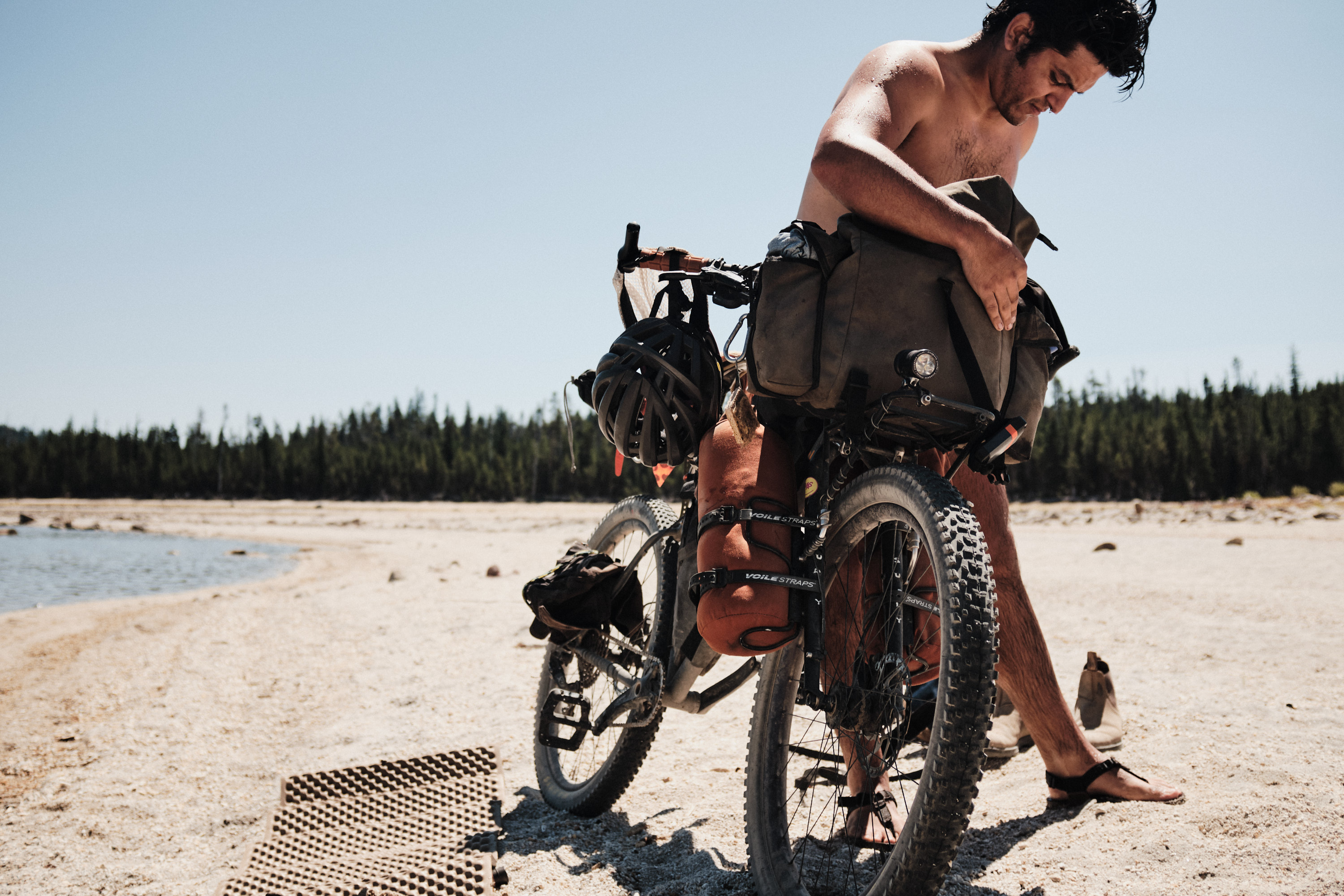




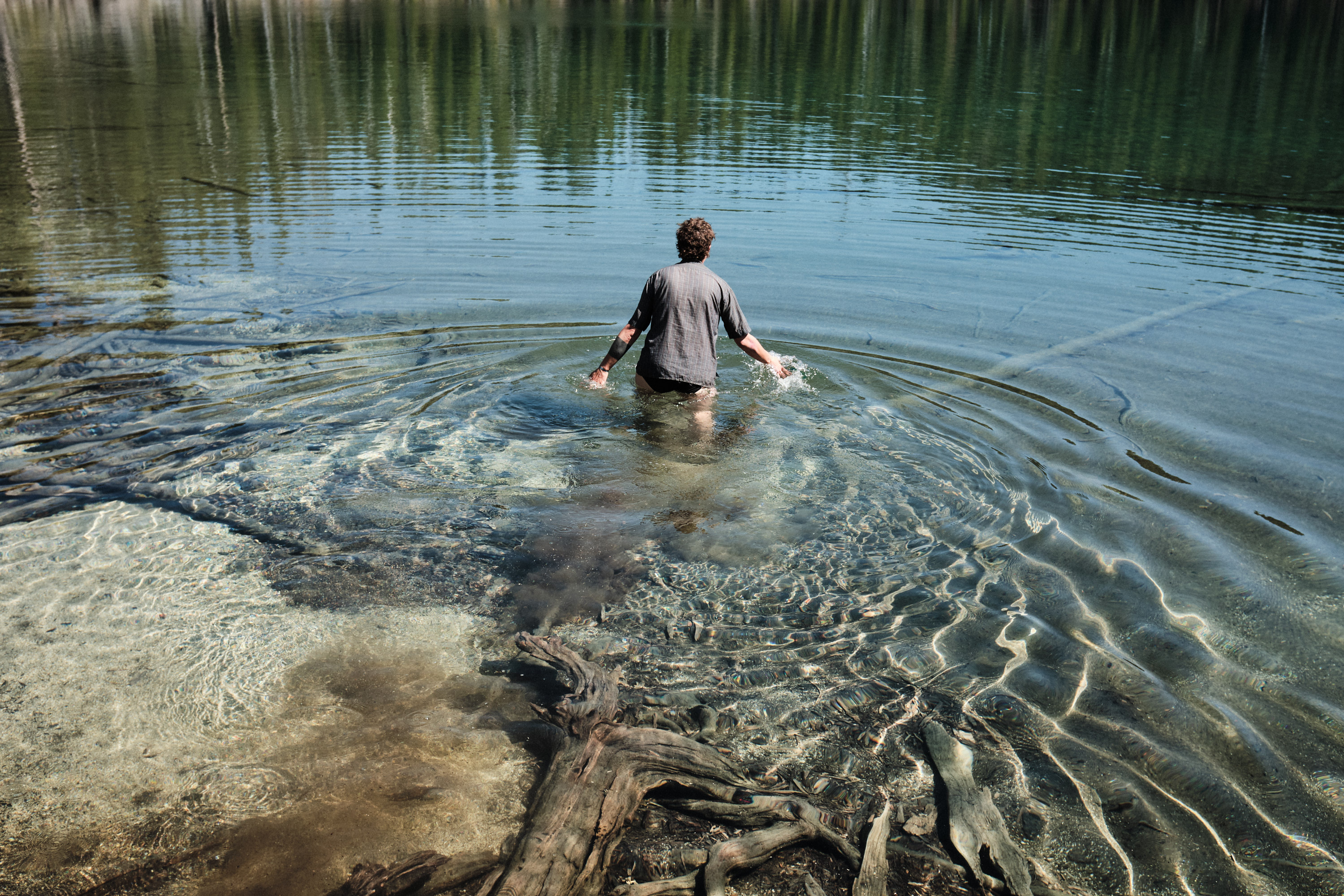
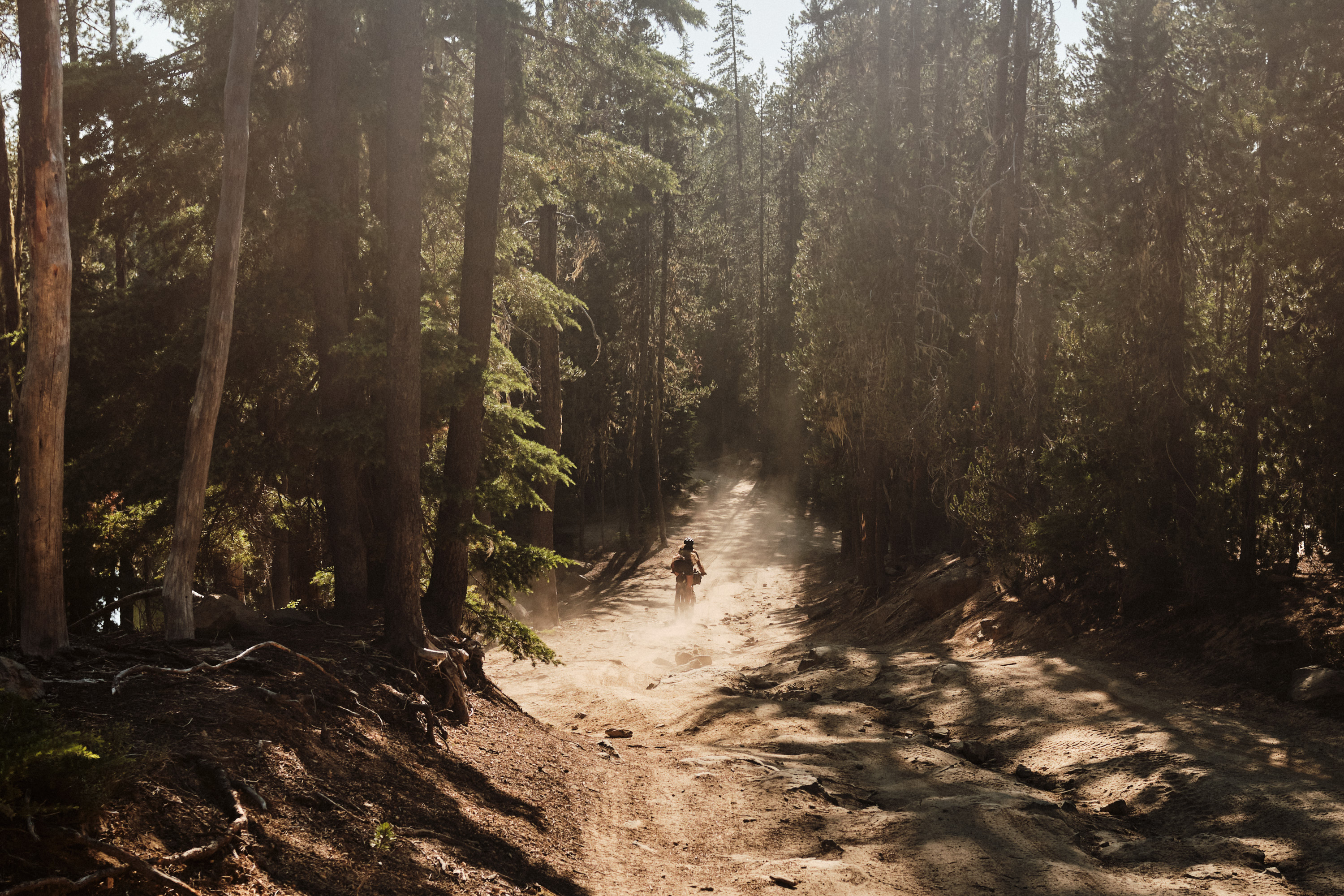
We came across an exuberant Renee at Timpanogos Lake, apparently impervious to all the mosquitoes. Maxwell soon arrived, mildly delirious and sleep-deprived. A severe drivetrain mechanical the first night resulted in him continuing on without one, riding almost 40 miles with his bike in Strider mode, seatpost as low as possible, legs Flintstone-ing his way up climbs until he arrived in Paisley to fix his bike.
We descended after him on the technical Middle Fork trail, deadfall freshly cut by the forest service. I was smiling but with gritted teeth. "This is so much fun. When will it stop?" When it got too dark, we zipped off the trail and found a campground for the night.
Alan and Elizabeth found us in the morning and we shared snacks and stories. I discovered that Elizabeth started the race with a full pizza in her framebags. I took note for future races. We learned that she had scratched in Chemult after a long slog through a smokey Yamsay Mountain, still feeling the effects from a concussion last year. From Alan, we heard that a trail angel had driven down from Seattle to Winter Rim and grilled tacos trail-side for the riders that pushed up that section.
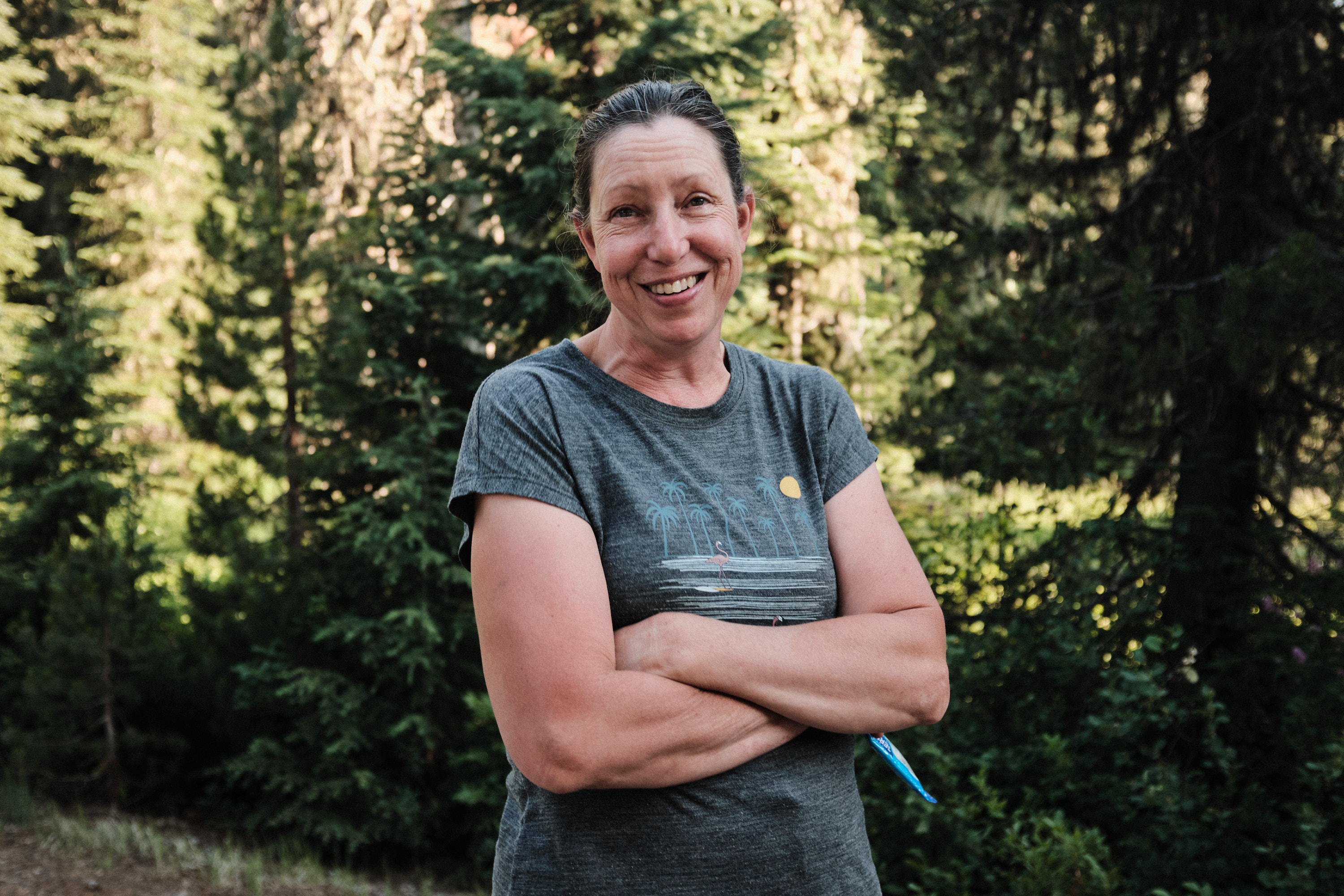




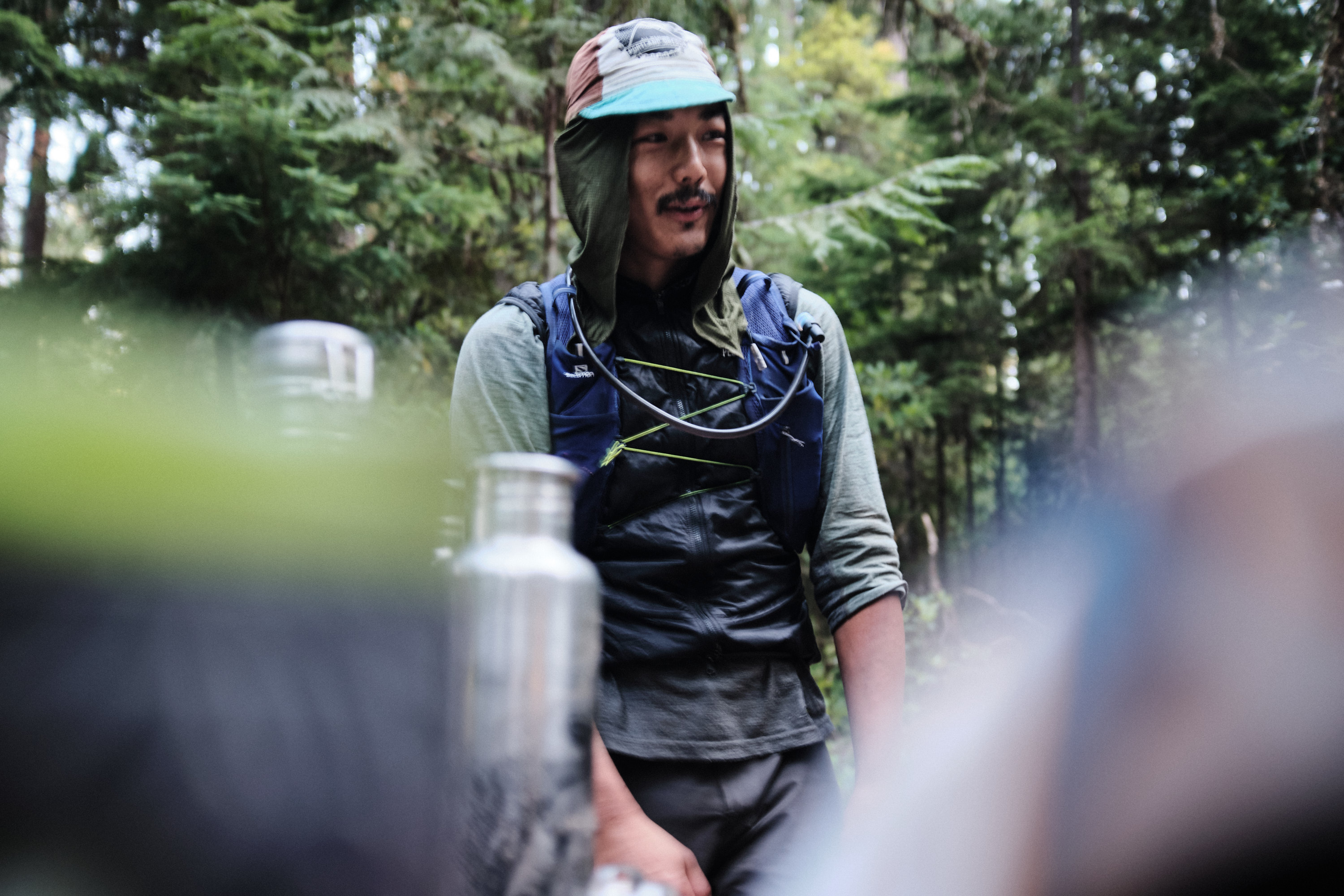
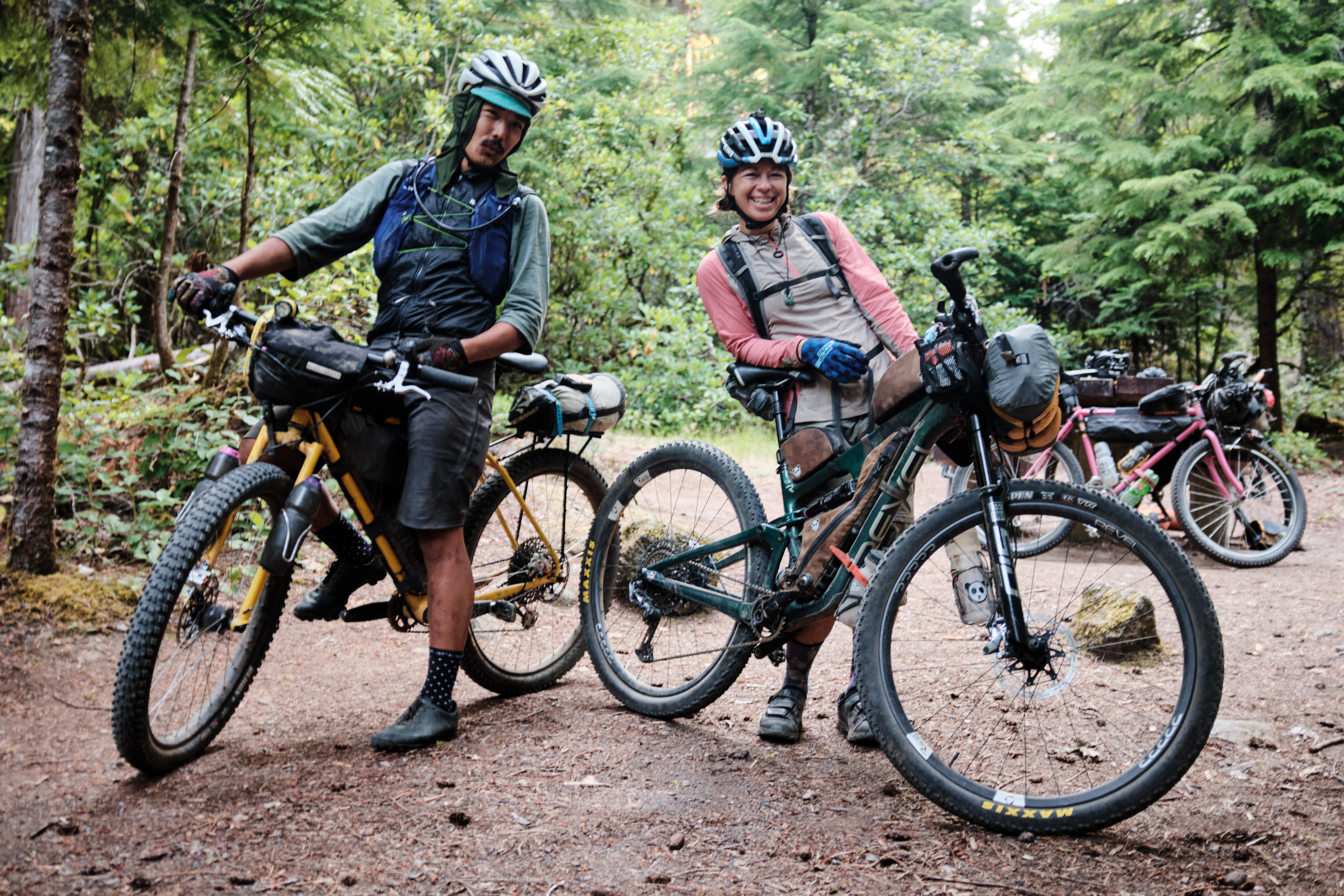
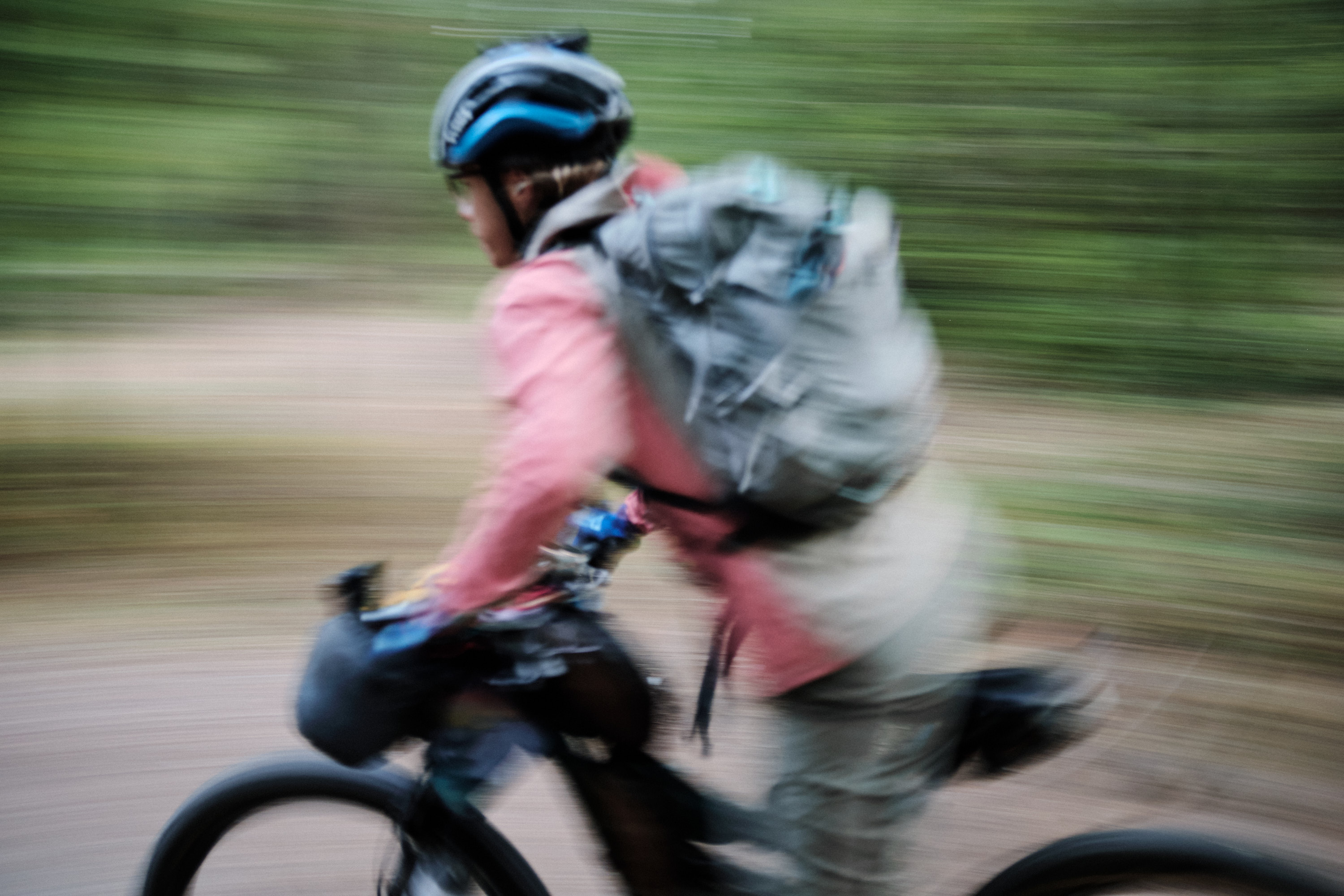
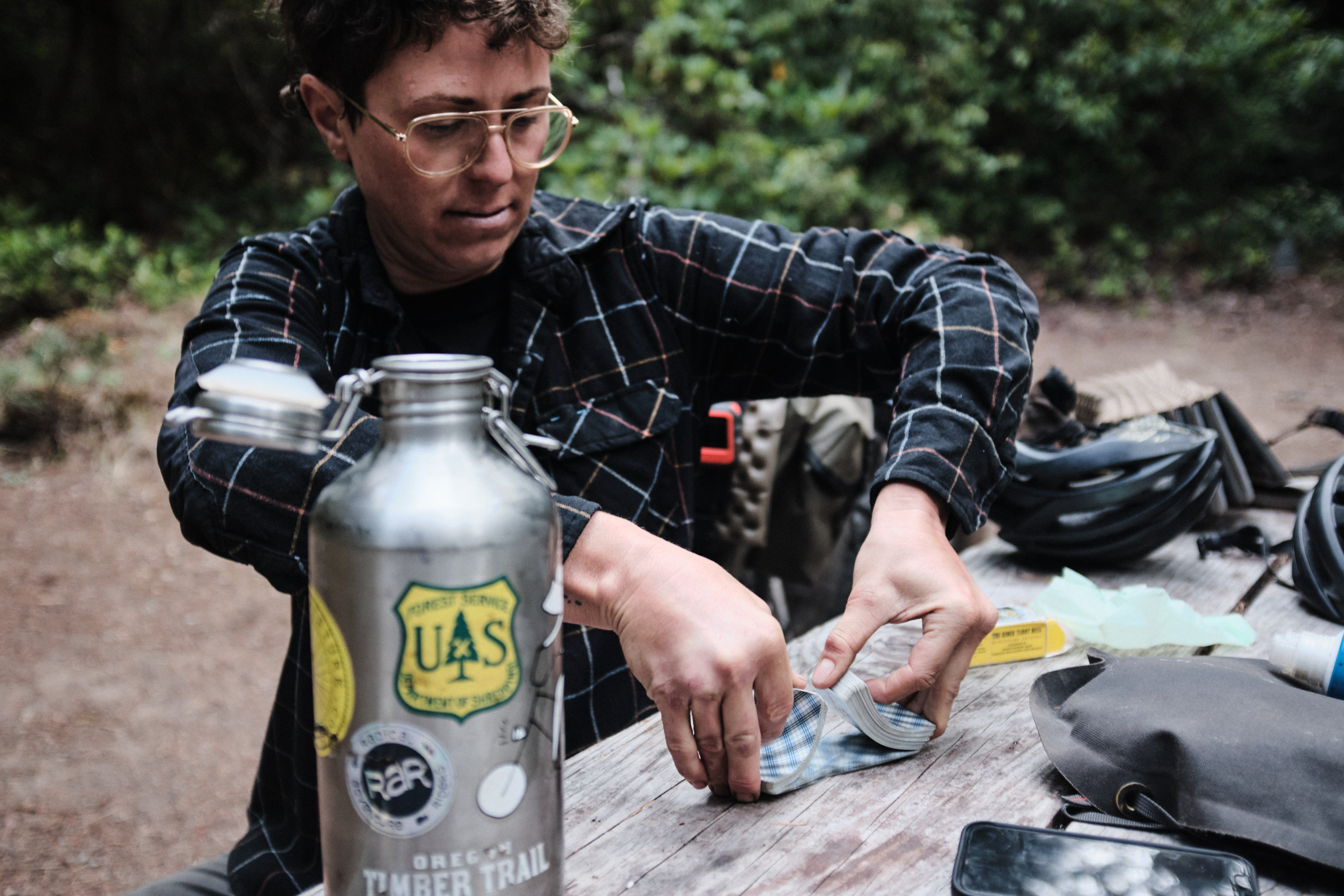



![I will eventually make a zine of Everett bike-pushing :]](https://freight.cargo.site/t/original/i/2c6c09eb5ebdbe719d4caa6e42a8589fbb2524c9e15e425a4e0ba0e4ef17c9ac/E47_OTT-136.jpg)
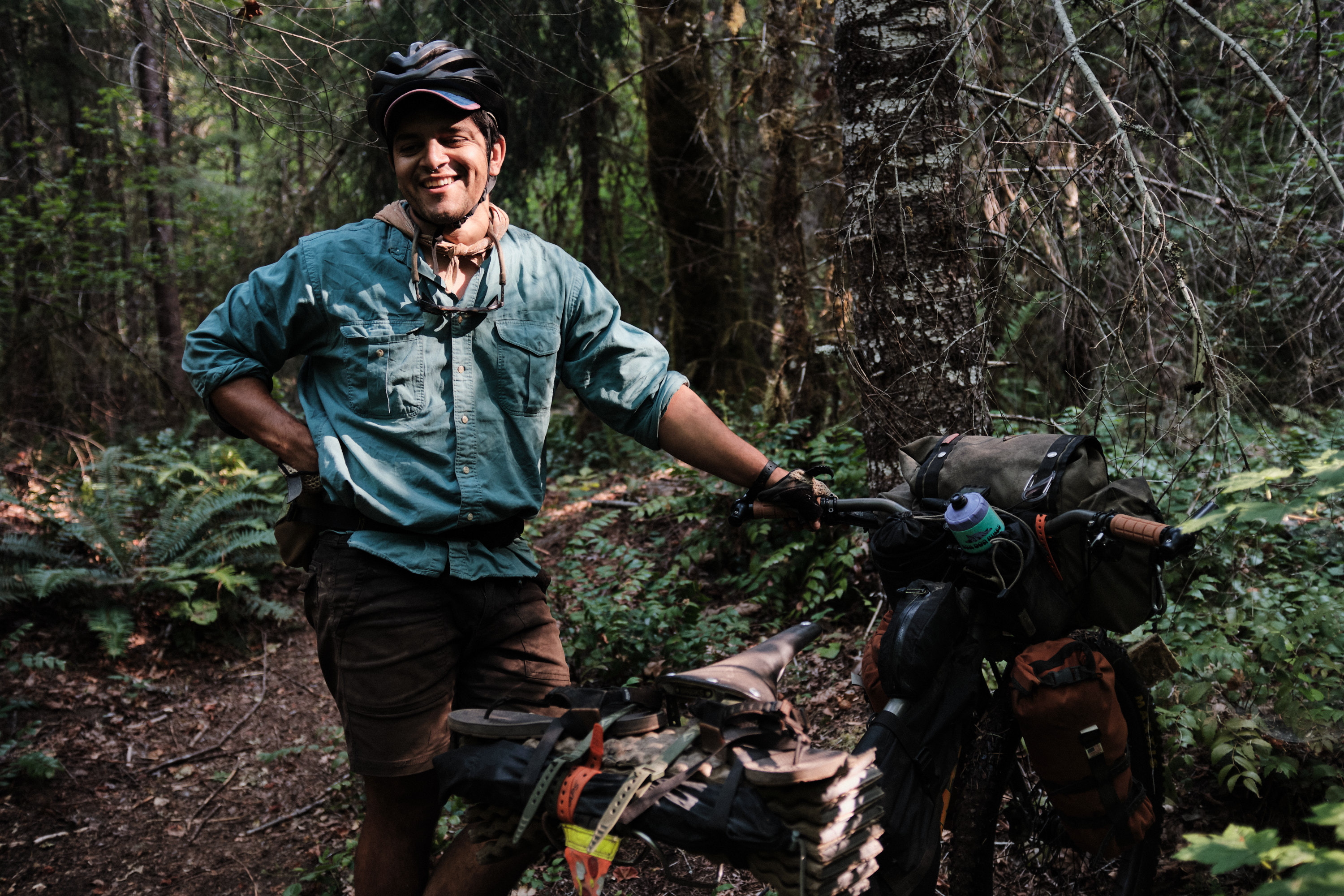


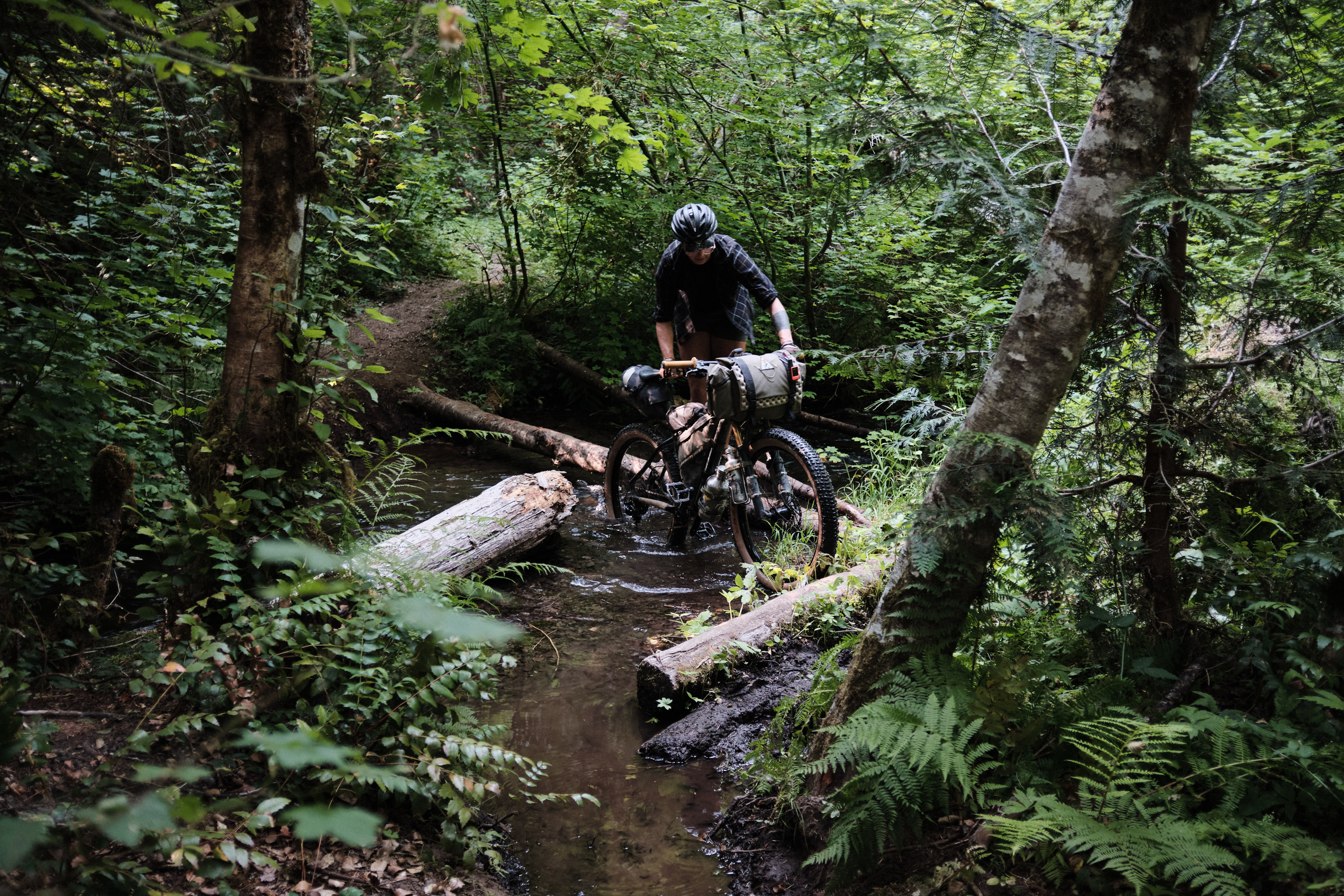

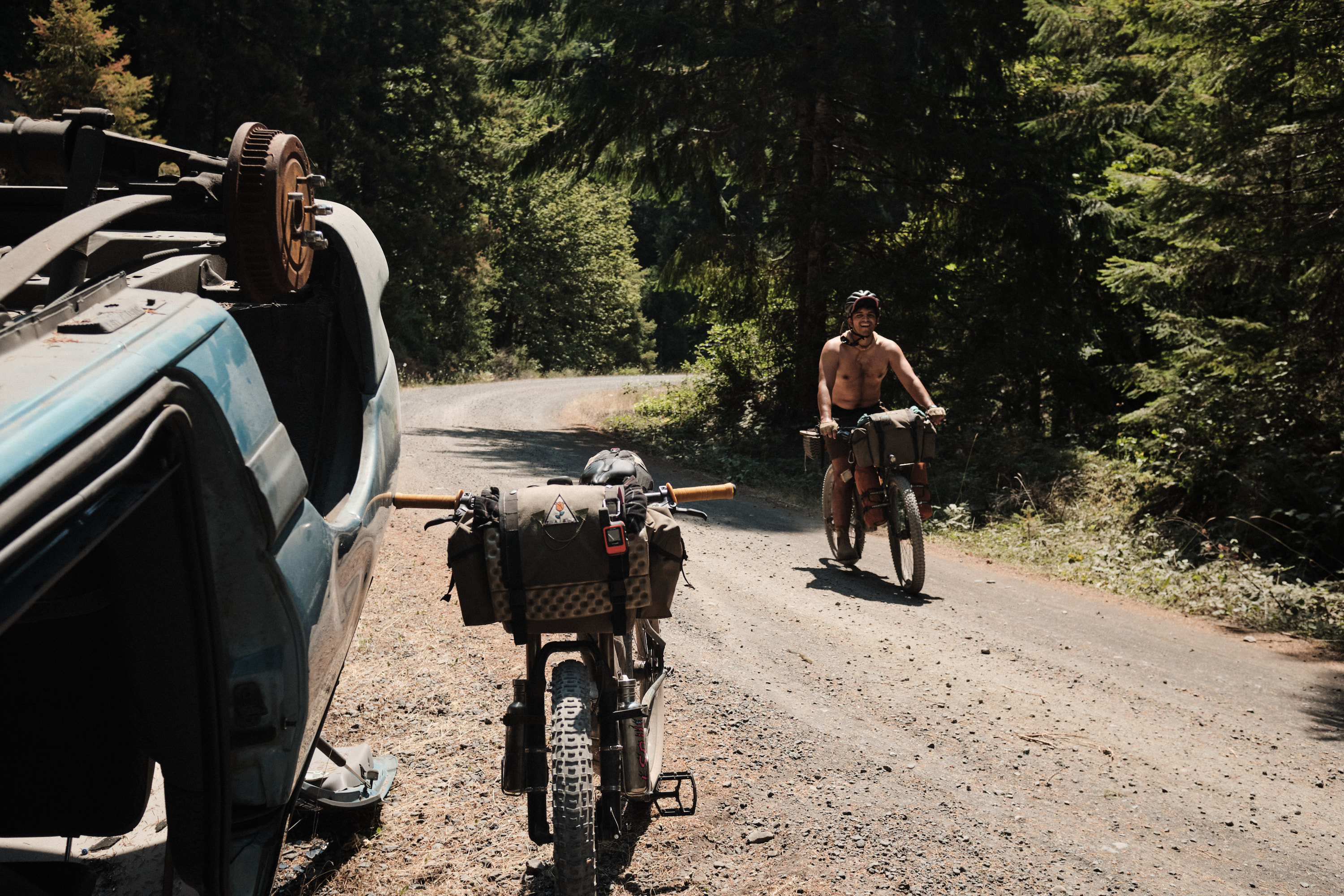
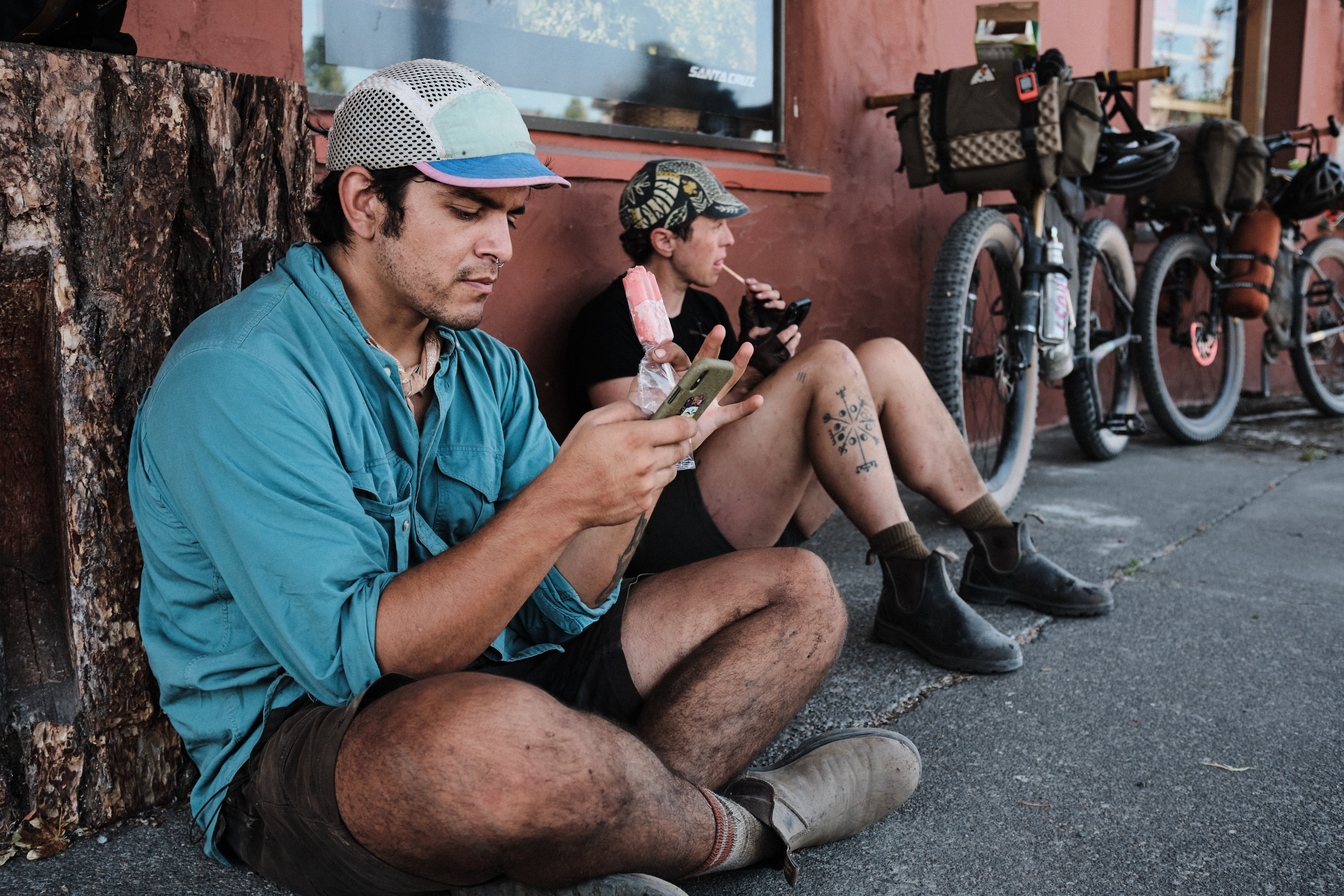

After getting into Oakridge, we received another group text from one of the organizers, Mike Wingertsahn, that an additional 60mi was cut off due to another fire close to the end point. Later that night, we heard that frontrunner Ben Handrich would end his ride in Sisters, opting to finish in a town with services rather than at a remote trailhead. Nat and Maxwell would join him over the next two days, setting that city as the unofficial finish line.
It was a strange, bittersweet feeling the following morning as nine of us congregated again for what would be our last large group depart, Bunchgrass Ridge eventually scattering us all, each continuing on our own separate journeys. I hope that we’ll be able to race this route again in better circumstances.
Thanks to Sean, Gabe, Mike, Thomas, everyone at the OTTA, and the innumerable number of volunteers who have worked on making the Oregon Timber Trail happen! So much relies on the support of the community. If you’d like to make a donation, you can do so here.






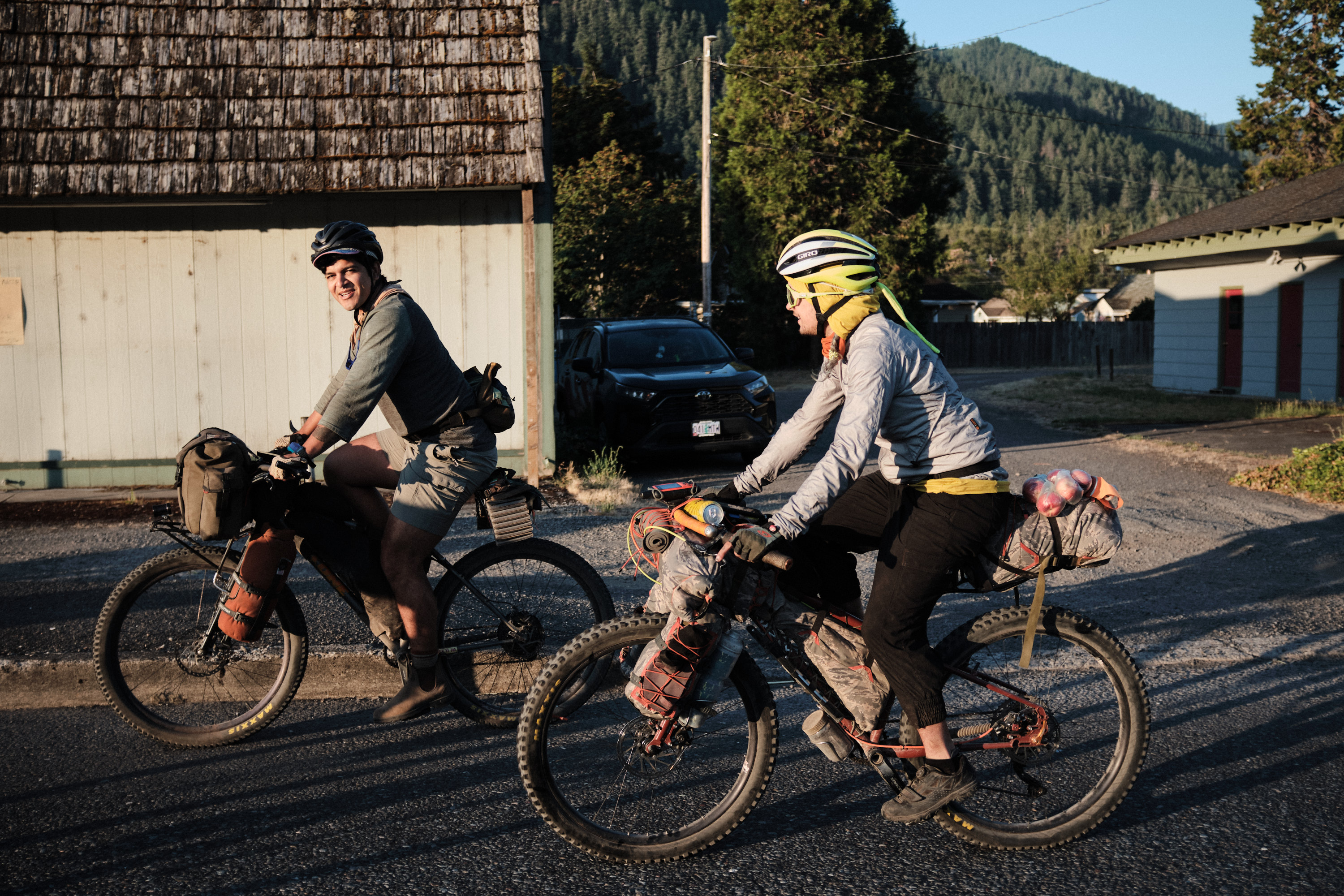
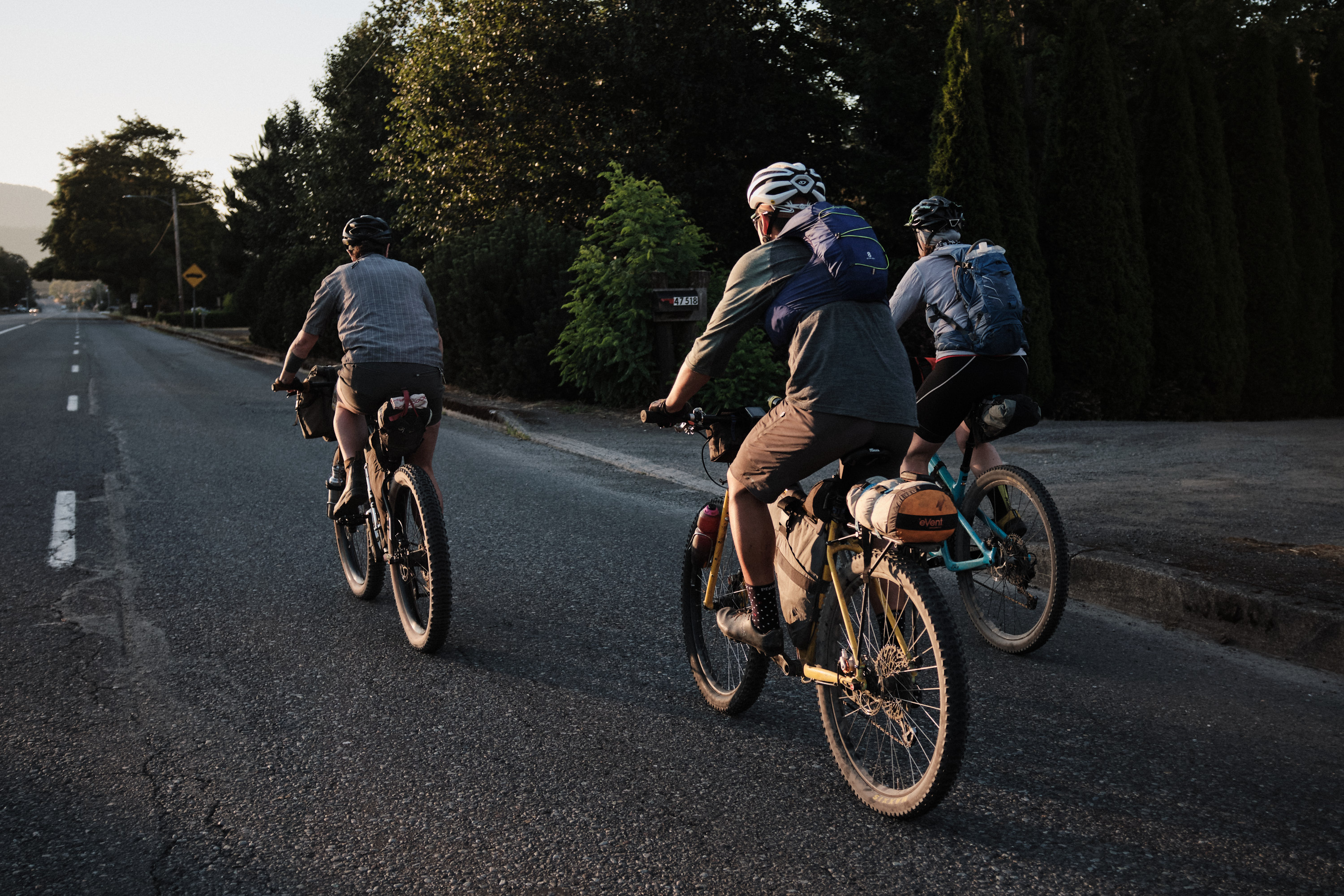



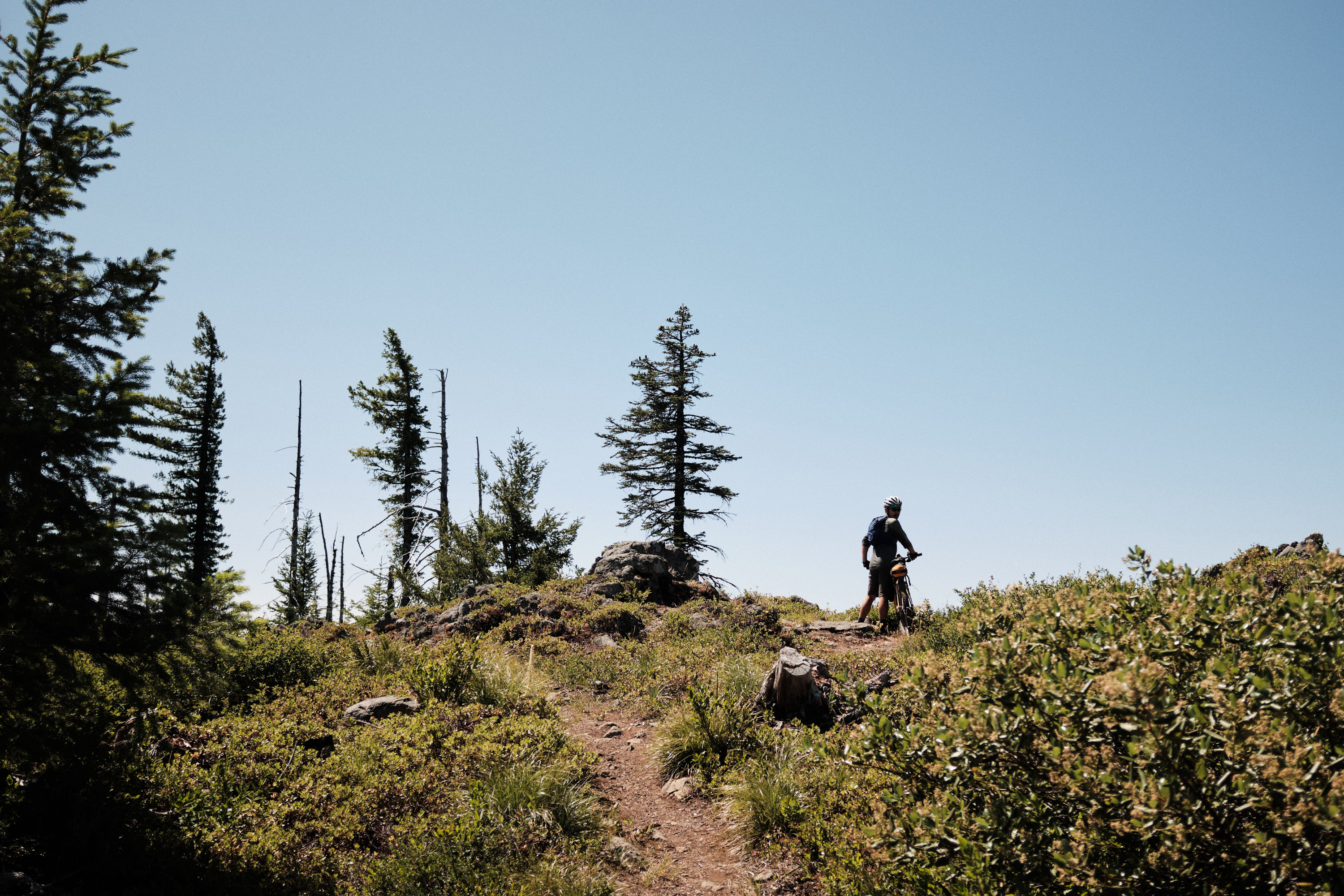










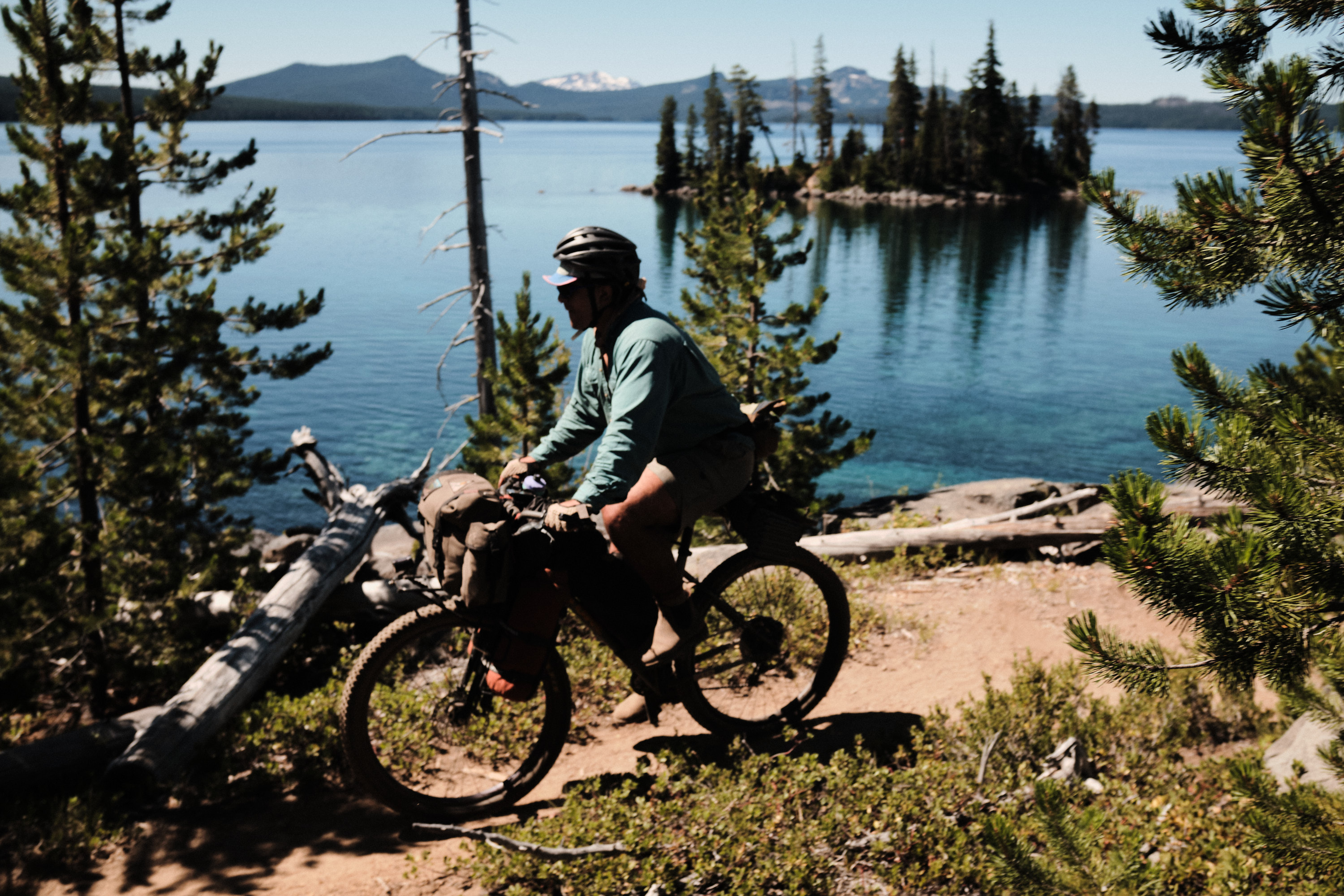


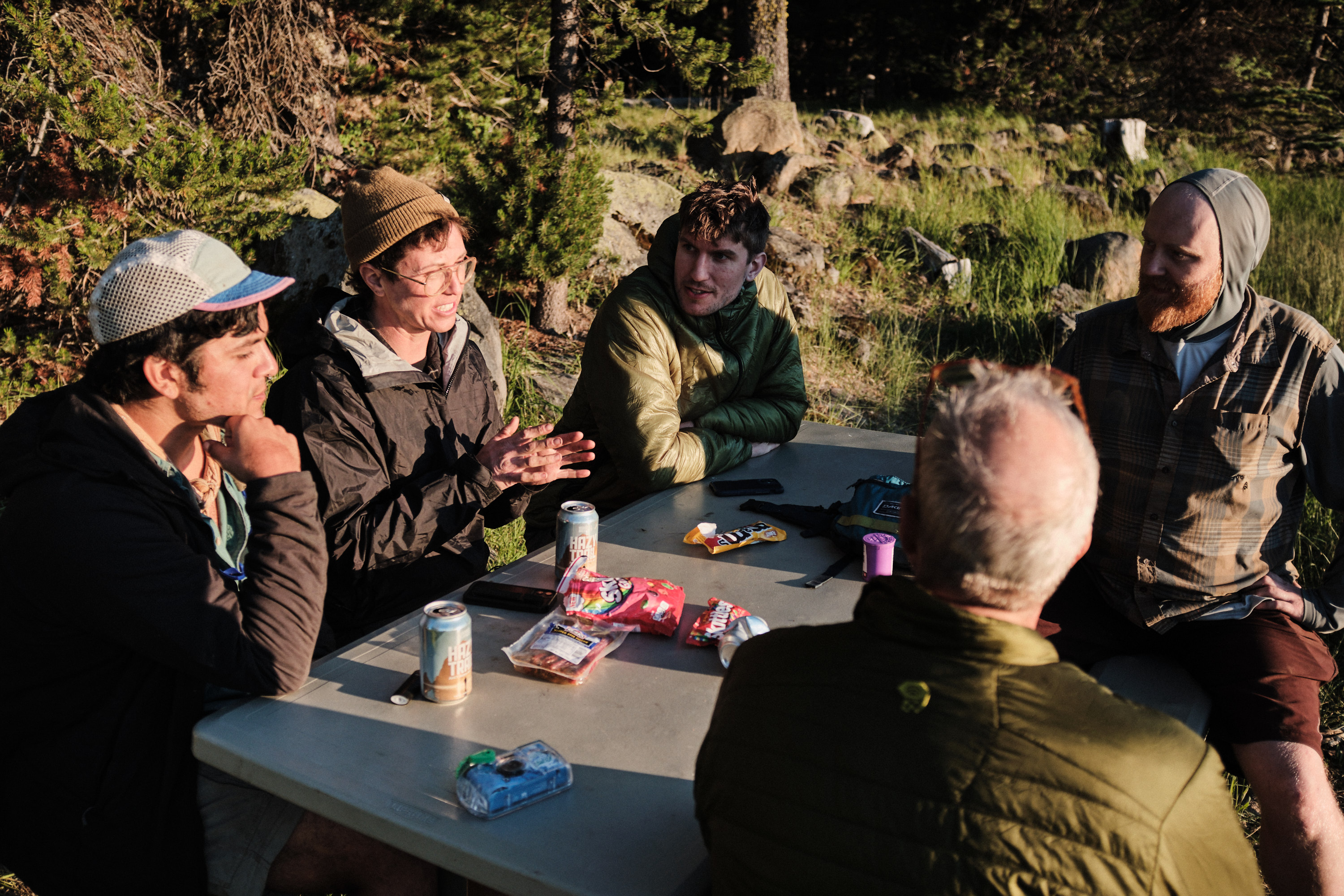
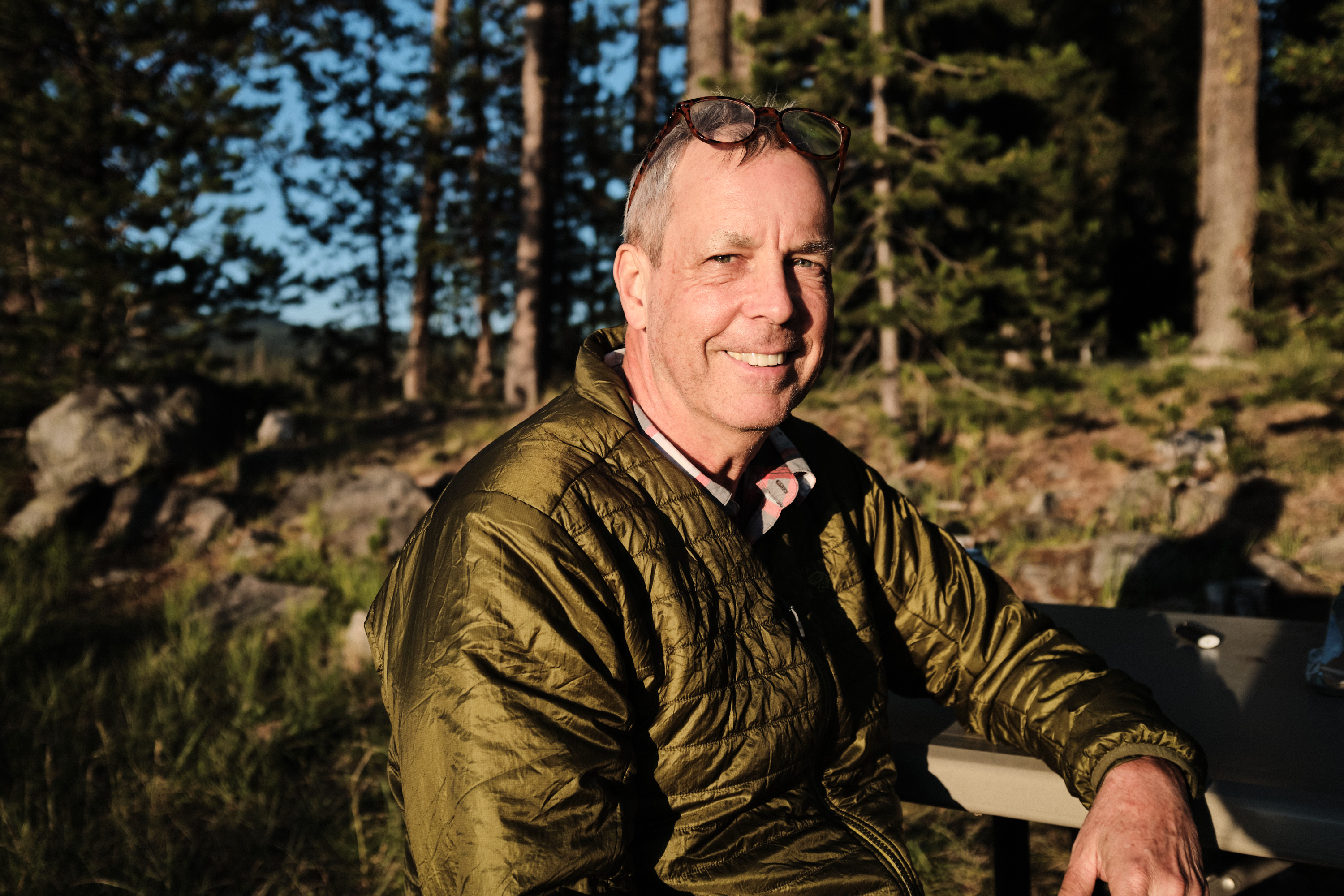
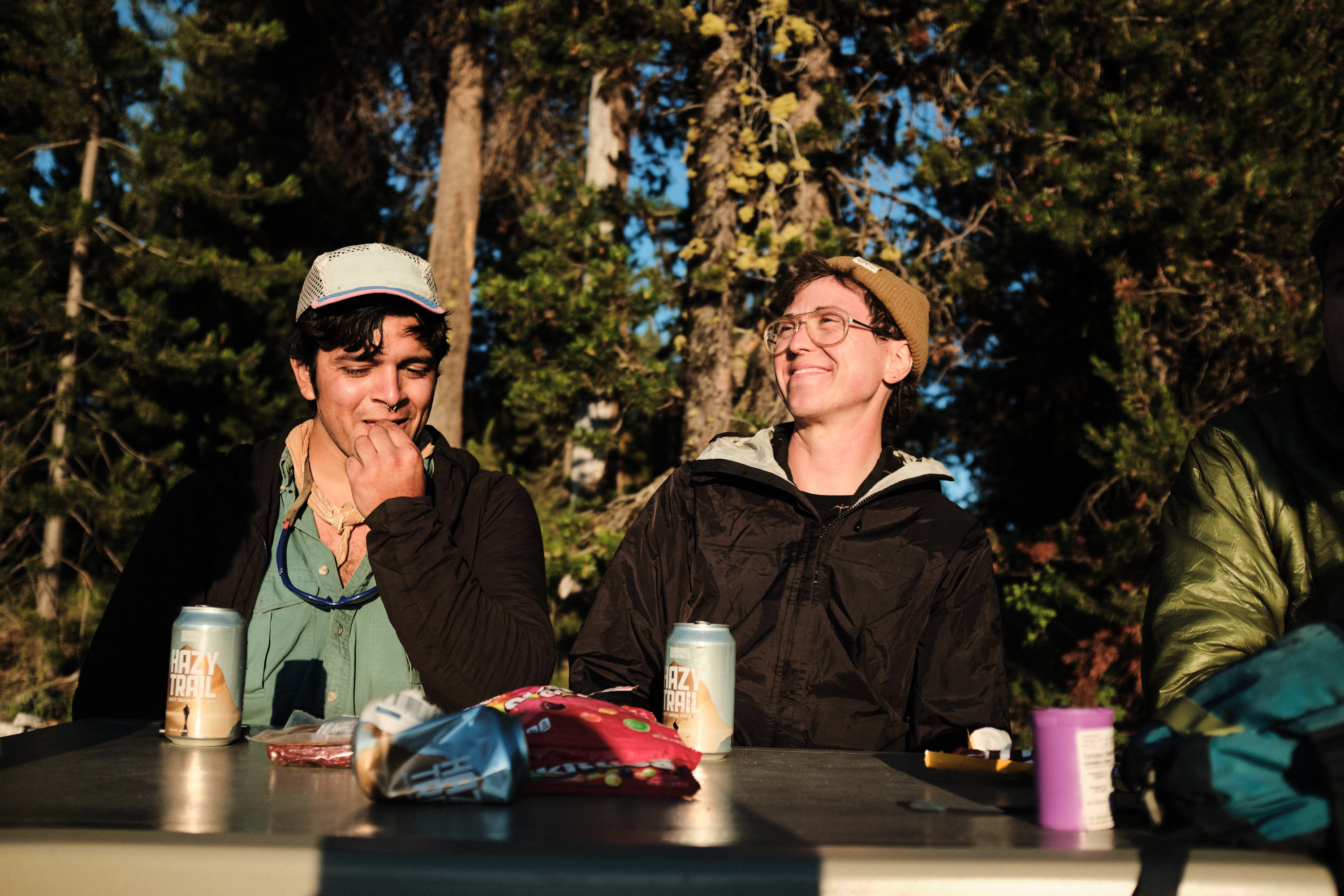

Au revoir, until the next time. Let’s hope for cooler temps the next time around the sun.
Type 2 miles and misadventures
© 2020 Conan Thai Photography